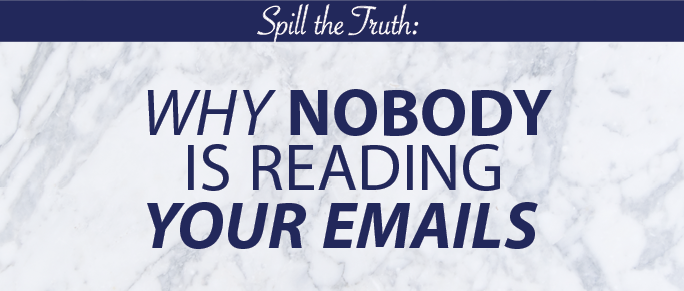With more than 100 billion emails sent and received each day, it’s no surprise some emails are being overlooked.
What makes this figure even more daunting is the average leader’s propensity to error on the side of narrative rather than journalistic writing.
The top three netiquette mishaps include:
- Hiding the point beneath endless paragraphs of background information
- Using a dull, non-actionable subject like “Checking in”
- Berating readers with a thinly veiled, snaggletooth tone
When writing emails, you have to make it easy for your reader to say yes. The easier it is, the more likely you’ll get a yes right away.
Here are a few reminders to help you communicate effectively:
- Beware of your English class training. Rather than build the message with background information that leads to a climax—begin with the climax.
- Keep it brief. Online readers tire quickly, so sentences need to be shorter than their printed counterparts. Remove every single unnecessary word.
- Use subject lines that inspire action. For example, “Quick question,” “Here’s the solution,” and “Who do you know?”
- Choose a tone that’s respectful of your readers. How? By avoiding emotionally charged words and phrases like “ramifications,” “inferior,” “irritated,” “shocking,” “love/hate,” “axe to grind,” or “in the hot seat.”
Before you act . . .
Prescreen your messages. Send a copy to yourself and pretend it’s coming from a complete stranger. If you’d be likely to read it, you’re ready to hit send for real.



